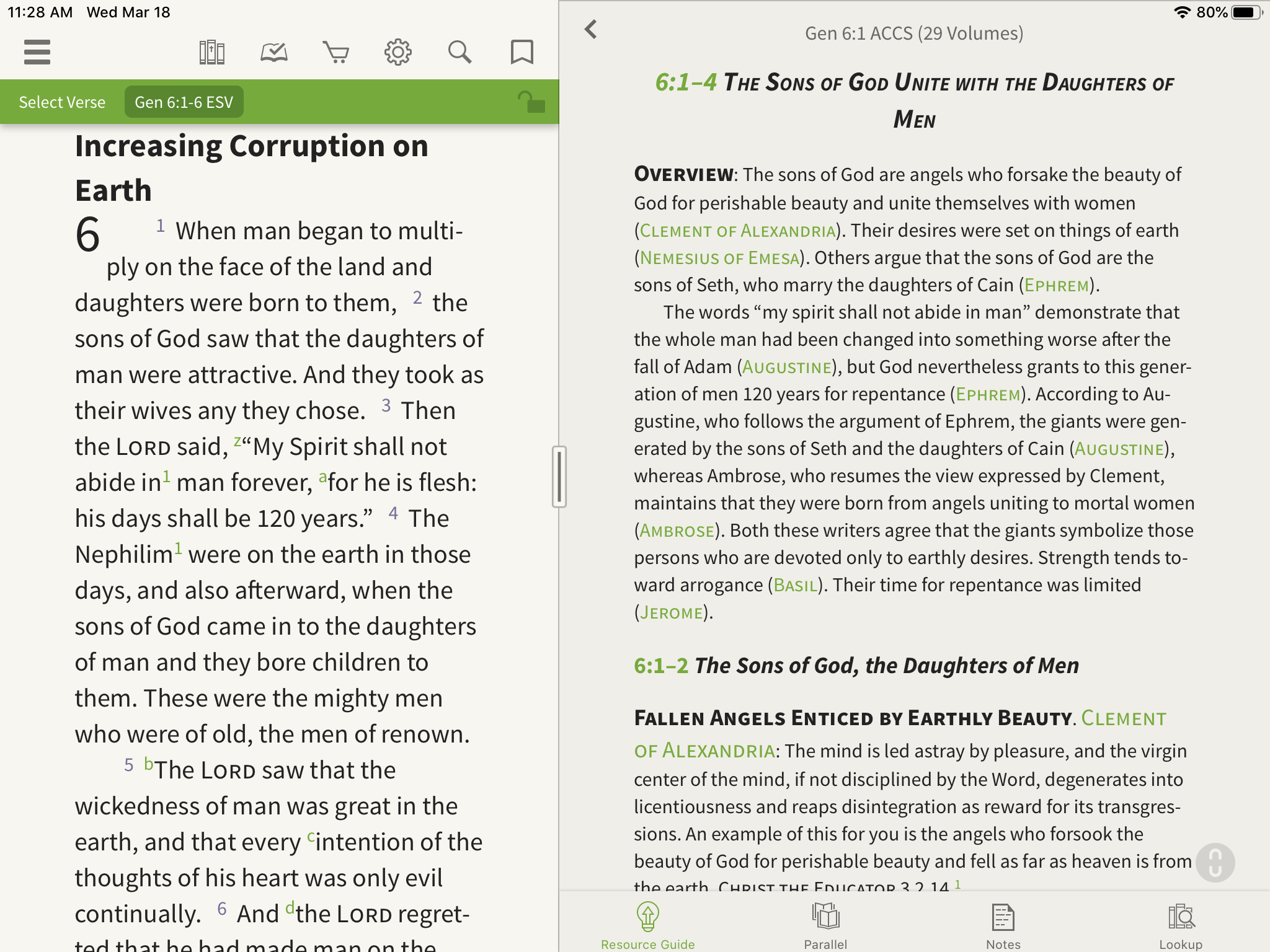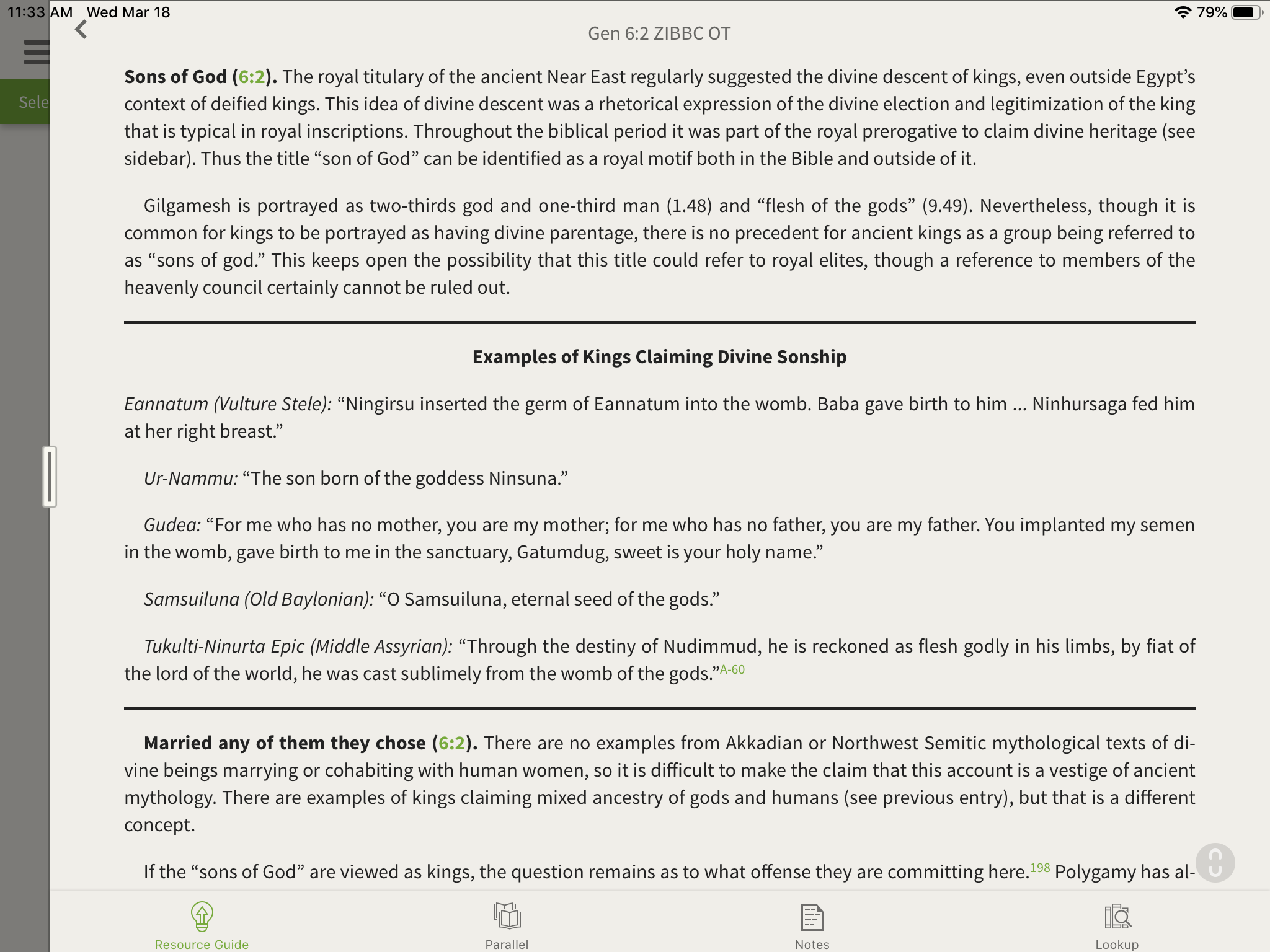So, it seems you’re curious about Nephilim in the Bible. You very easily could have ended up on a site with not-so-reliable information (we’re looking at you, Wikipedia!). But, here you are! And you’ll be better off for it because you won’t just learn reliable information on the Nephilim. We’re also going to teach you how to do the research yourself.
Pick Reliable Resources for Researching Nephilim & Other Topics in the Bible
First, we need to pick reliable resources for researching Nephilim in the Bible. We will want quality information, from good sources. Here are some easy tips to get started:
Tips for telling a good source from a bad source
- Research the author — are they credible?
- Look at their citations — do they have any? Where did they get their information?
- Beware of overly dramatic language.
- Does the website and/or publisher appear professional and recommended by other professionals?
Primary Sources on Nephilim
Before jumping into secondary sources, let’s take a look at what the Bible says about Nephilim. This should be the first place you look. However, it can be tricky finding every reference without help. Thankfully, there are great tools that can help you accomplish this step in a few minutes.
Use Olive Tree’s Search Feature

We’ve worked hard to make sure our search feature gives all the results you’re looking for. In fact, we could get into the knitty gritty of searching for specific variations of phrases… but that’s a different post. Right now, let’s see how many verses we can find containing “Nephilim.”
Genesis 6:1-8, NIV
“When
human beings began to increase in number on the earth and daughters were
born to them, the sons of God saw that the daughters of humans were
beautiful, and they married any of them they chose. Then the Lord said,
‘My Spirit will not contend with humans forever, for they are mortal;
their days will be a hundred and twenty years.’
The Nephilim
were on the earth in those days—and also afterward—when the sons of God
went to the daughters of humans and had children by them. They were the
heroes of old, men of renown.
The Lord saw how great the
wickedness of the human race had become on the earth, and that every
inclination of the thoughts of the human heart was only evil all the
time. The Lord regretted that he had made human beings on the earth, and
his heart was deeply troubled. So the Lord said, ‘I will wipe from the
face of the earth the human race I have created—and with them the
animals, the birds and the creatures that move along the ground—for I
regret that I have made them.’ But Noah found favor in the eyes of the
Lord.”
Numbers 13:31-13, NIV
“But the men who had gone up with him said, ‘We can’t attack those people; they are stronger than we are.’ And they spread among the Israelites a bad report about the land they had explored. They said, ‘The land we explored devours those living in it. All the people we saw there are of great size. We saw the Nephilim there (the descendants of Anak come from the Nephilim). We seemed like grasshoppers in our own eyes, and we looked the same to them.’”
Always read verses in context!
Strong’s Tagged Bibles

The search feature only looks for the word in the language you’ve
searched in. In our case, we used English. But you can also search for
the word in its original language, Hebrew, with a Strong’s Tagged Bible.
First,
tap on any word you want to look up. Right away, a definition will
appear. Sometimes, words in the original language can have a different
meaning than we expect! Dictionary entries like this one will make sure
you are on the right track.
Second, search the Strong’s number throughout the Bible (peep some of those in-depth search options we mentioned previously). You may or may not find new instances of the word being used. However, the verses we found in our first search really are the only ones that reference “Nephilim.”
Secondary Sources on Nephilim
Next, it can be good to look at secondary sources. These resources are created by people who have spent their lives academically studying the Bible.
Start with academic resources that use simple sentences and quick blurbs. You’ll find notes like these in study Bibles. If you want more information, you can look into commentaries, finding one that fits your reading level and covers the topics you want.
Using Study Bibles to Learn about Nephilim

We’ve looked into a few popular study Bibles to find basic information on Nephilim. Here are some quotes we found.
Nephilim. People of great size and strength. (see Nu 13:31-33; Dt 1:28 and note). The Hebrew word means “fallen ones.” They were viewed by people as “the heroes of old, men of reknown,” but in God’s eyes they were sinners (“fallen ones”) ripe for judgment. — NIV Study Bible Notes

Did you catch the extra verse reference? Our search results didn’t pull up Dt 1:28, but the NIV Study Bible Notes said this verse references Nephilim. Let’s read it:
“Where can we go? Our brothers have made our hearts melt in fear. They say, ‘The people are stronger and taller than we are; the cities are large, with walls up to the sky. We even saw the Anakites there.” — Dt 1:28

Then, the NIV Study Bible contains another note on this verse.
Anakites. Earlier inhabitants of Canaan, described as giants (see Dt 2:10, 21; 9:2; Nu 13:32-33).
We’ve already read the verse from Numbers, but let’s look at the other verses mentioned here for further background information.
“The Emites used to live there—a people strong and numerous, and as tall as the Anakites.” — Dt 2:10
“That too was considered a land of the Rephaites, who used to live there; but the Ammonites called them Zamzummites. They were a people strong and numerous, and as tall as the Anakites. The Lord destroyed them from before the Ammonites, who drove them out and settled in their place.” — Dt 2:20-21
“The people are strong and tall—Anakites! You know about them and have heard it said: ‘Who can stand up against the Anakites?’” — Dt 9:2

One Last Piece of Information from the NIV Study Bible
The phrase “sons of God” here (in Genesis 6:2) is interpreted to refer either to angels or to human beings.
Sons of God as Angels
In such places as Job 1:6; 2:1 it refers to angels, and probably also in Ps 29:1 (where it is translated “heavenly beings”). Some interpreters also appeal to Jude 6–7 (as well as to Jewish literature) in referring the phrase here to angels.
Others, however, maintain that intermarriage and cohabitation between angels and human beings, though commonly mentioned in ancient mythologies, are surely excluded by the very nature of the created order (see ch. 1; Lk 20:34–36). Elsewhere, expressions equivalent to “sons of God” often refer to human beings, though in contexts quite different from the present one (see Dt 14:1; 32:5; Ps 73:15; Isa 43:6; Hos 1:10; 11:1; Lk 3:38; 1Jn 3:1–2, 10).
Sons of God as Sethites
“Sons of God” (vv. 2, 4) possibly refers to godly men, and “the daughters” to sinful women (significantly, they are not called “daughters of God”), probably from the wicked line of Cain. If so, the context suggests that vv. 1–2 describe the intermarriage of the Sethites (“sons of God”) of ch. 5 with the Cainites (“the daughters”) of ch. 4, indicating a breakdown in the separation of the two groups.
Sons of God as Corrupt Rulers
Another plausible suggestion is that the “sons of God” refers to royal figures (kings were closely associated with gods in the ancient Near East) who proudly perpetuated and aggravated the corrupt lifestyle of Lamech, son of Cain (virtually a royal figure), and established for themselves royal harems.

What Have We Learned So Far?
- The Nephilim are tall
- The Nephilim are strong
- There were a lot of Nephilim
- The Anakites descend from the Nephilim
- The Anakties (and then perhaps the Nephilim?) are from Canaan
- The Emites may also be Nephilim
- The Rephaites may also be Nephilim
- The Nephilim were well known
- The Nephilim may have been a result of the intermarriage of the “sons of God” and “the daughters,” or perhaps they were also simply known as heroes of old
- There are three different ideas on who the sons of God and daughters were:
- Angels and human women
- “Sons of God” mean angels elsewhere in the Bible
- However, this is against the natural order of things
- Intermarriage between the Sethites (sons) and the wicked Cainites (daughters)
- Sons of God were royal, corrupt figures
- Angels and human women
More Secondary Sources on Nephilim
Using Commentaries to Learn About Nephilim

The NIV Application Commentary “so we will be brief.” lol not but that’s ok, because we want info!
First the author covers the three views we’ve mentioned above. He goes much more in-depth.
Some fun facts we found:
- Sons of God as angelic beings was the view held unanimously until the second century
- Then the intermarriage concept rose to popularity through Augustine’s City of God and soon became the Christian interpretation – until the nineteenth century
Next, the author goes really in-depth. We wish we could share everything here with you, but it would be too much.
So, here’s a summary:
The angelic view has been around a long time. If we want to consider the Sethite or rulers views, we need to see if there is any reason the angelic view doesn’t work. Here are three contentions:
- Cohabitation between angels and humans has no immediately obvious connection with the purposes of Genesis;
- an angelic intrusion is considered out of place in the sequence of episodes recounting the advance of human sin; and
- the mythological tone is at odds with life in the real world as we know it, though in the end our interest is in the world as the Israelites knew it.
It makes much more sense (in the literary, cultural, and theological context) for “sons of God” to point more to “Sethites” or “rulers.”
Then, the author offers some reasons for why the “Sethites” view is flawed:
- It ignores the question of the existence of other lines of descent from Adam and Eve
- assumes that the lines of Cain and Seth remained separate for millennia
- extrapolates from the statements about Enoch and Lamech that the entire line of Seth was godly and the entire line of Cain was wicked
- it is much more difficult to see the phrase “daughters of men” in theological terms referring to females of the line of Cain
- Why should “daughters of men” be used to describe wicked people?
- it is difficult to extrapolate the warnings against elect Israel intermarrying and apply them to a group (Sethites) that has not been designated elect
Lastly, he offers even some critiques of the “rulers” viewpoint. Essentially, it is difficult to nail down the offense. Is the problem that the rulers were practicing polygamy or being promiscuous? History shows us that perhaps both are the answer. Although the passage uses the word “married,” this could be in reference to “right of the first night” — “the local authority imposes his will on his people by demanding and exercising the right to spend the first night with any woman who is being married.”

You can learn how to apply this passage about evil rulers to today.
Conclusion
If this exercise of the right of the first night is the offense, the offenders are people in authority. This theme fits well with the progression of offenses in these early chapters: individuals (Adam and Eve) → family (Cain) → society leaders (sons of God) → everyone (Flood).
You can see other examples from this commentary on our blog:
Making the Most of NIVAC
The Meaning of Instruments in Psalms
The Structure of Thanksgiving
Deuteronomy: A Theological Manifesto
Learning About Nephilim with Other Resources
Lastly, let’s look at a couple resources that aren’t your standard study Bible or commentary.
Ancient Christian Commentary on Scripture
This “commentary” is truly one-of-a-kind. It pulls together all the comments made by church fathers and organizes them by sections of Scripture. That way, you can quickly refer to a handful of church father’s notes while reading the Bible. Without this tool, you’d be stuck researching every church father’s words on a particular passage.
What a time saver!

You can enlarge this image by tapping on it. Interestingly, we see what we have already learned confirmed. Originally, it was thought that Nephilim were created by the mating of angels and human women. But then, Augustine argued for the “Sethite” case.
You can see other examples from this commentary on our blog:
Gregory the Great FAQ
An Ancient Perspective on the Beatitudes
Zondervan Illustrated Bible Backgrounds Commentary
The last resource we will look at for our study is the Zondervan Illustrated Bible Backgrounds Commentary. We couldn’t fit all the information in one screenshot, but this gives you a good understanding of what the resource covers. Our favorite part is that it provides you with real examples of kings from that era claiming divine sonship!

Again, feel free to tap on the image to enlarge it for reading.
You can see other examples from this commentary on our blog:
Who Are the Sanhedrin?
Illustrated Bible Backgrounds Commentary
One Final Summary: Who Were the Nephilim in the Bible?
Alright! We we went really in-depth, but here is one, birds-eye view of the question we aimed to answer:
The
Nephilim (Hebrew: נְפִילִים, nefilim) were the offspring of the “sons
of God” and “daughters of men” found in Genesis 6. Their height
terrified surrounding communities. There are three beliefs concerning
the origin on the Nephilim: 1. The Sons of God were angels, mating with
human women. 2. The Sons of God were Sethites, mating with foreign
Canaanite women. 3. The Sons of God were evil rulers, overtaking women
in their city. 
What Will You Research Next?
Wow! We did it. Maybe this article was much longer than you intended. But if you stuck through it, congrats! You took the time to dig into a subject in the Bible that is often summarized in one or two sentences.
Now that you’ve learned about some important Bible study tools and tips, what will you study next?
We’d love to hear your ideas in the comments below. Maybe it will inspire a new post! Also, you can look through our currently discounted Bible study tools to snag quality information for cheap.




0 Comments